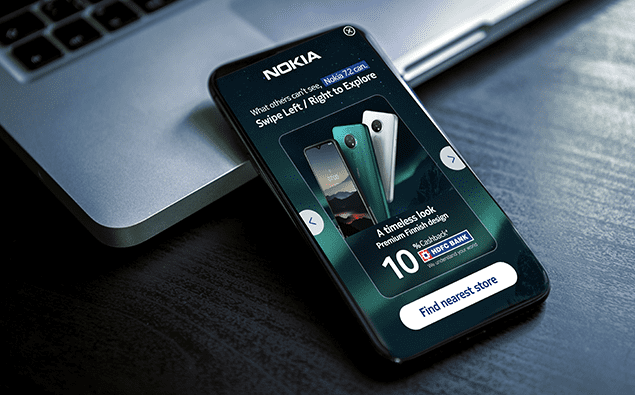Identifying the Smartphone Savvy Audiences
To begin with, the brand leveraged precision targeting through InMobi Audiences based on various in-app signals such as location, app ownership, ad interaction data, and historical preferences, to identify technology enthusiasts, mobile upgraders, and frequent mobile switchers as the target group for the campaign.

Engaging Audiences with Mobile-first Immersive Ads
With several location polygons deployed across India, the brand launched two variants of immersive rich media carousel ads, one each for the Nokia 6.2 and 7.2 handsets. With the ground-breaking features of the handset displayed on the ad, and the incentivized model of providing cashback, the brand allows the user to click on any banner of the carousel to get further details on the handset through two CTAs, 1. ‘Get Directions’, which allows consumers to track their current location and help them navigate to the nearest store (to drive retail footfalls) 2. ‘Buy Now’ which redirects the user to the Nokia Phone’s official product page. The ads are also integrated with a store mapping feature to let consumers find the nearest store, enabled upon a single click on the CTA, ‘Find the nearest store'.

Measuring Impact through BLS and Footfall Attribution
With the precision targeting and immersive ads in action, it was the time for the brand to measure the uplift in awareness and most importantly, footfalls. The brand leveraged InMobi Pulse, the leading mobile consumer intelligence platform to measure the lift with two different sets of the audience, the Control Group (the audience who haven’t seen the ads), and the Exposed Group (the audience who have seen the mobile ads) to determine the impact of mobile on brand awareness. Targeting the audience cohorts, the brand geo-fenced 3300 Nokia stores across PAN India to subsequently measure the impact of the store footfalls.



















